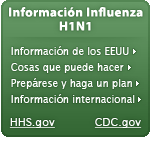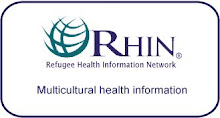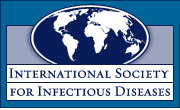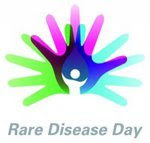Increase in Incidence of Congenital Syphilis — United States, 2012–2014
 |
| MMWR Weekly Vol. 64, No. 44 November 13, 2015 |
| PDF of this issue |
Increase in Incidence of Congenital Syphilis — United States, 2012–2014
Weekly
November 13, 2015 / 64(44);1241-1245, PhD1,2; , MD, PhD3; , PhD2; , MD2; , MD2
Congenital syphilis (CS) occurs when a mother infected with syphilis transmits the infection to her child during pregnancy. CS can cause severe illness, miscarriage, stillbirth, and early infant death. However, among pregnant women with syphilis who deliver after 20 weeks gestation, maternal treatment with penicillin is 98% effective at preventing CS (1). In the United States, the rate of CS decreased during 1991–2005 but increased slightly during 2005–2008 (2). To assess recent trends in CS, CDC analyzed national surveillance data reported during 2008–2014, calculated rates, and described selected characteristics of infants with CS and their mothers. The overall rate of reported CS decreased from 10.5 to 8.4 cases per 100,000 live births during 2008–2012, and then increased to 11.6 cases per 100,000 live births in 2014, the highest CS rate reported since 2001. From 2012 to 2014, reported cases and rates of CS increased across all regions of the United States. To reduce CS, the timely identification of and response to increases in syphilis among women of reproductive age and men who have sex with women are essential. All women should have access to quality prenatal care, including syphilis screening and adequate treatment, during pregnancy (3).
CS is a nationally notifiable disease with case data reported to CDC by all 50 states and the District of Columbia through the National Notifiable Diseases Surveillance System.* For surveillance purposes, the definition of a CS case includes both stillbirths and infants with clinical evidence of CS, as well as stillbirths and infants born to mothers with untreated or inadequately treated syphilis, regardless of the infant's manifestation of clinical disease. CDC analyzed cases of CS reported during 2008–2014, describing selected demographic and clinical features of infants with CS and their mothers. CS rates were calculated as cases per 100,000 live births by using U.S. natality data published by the National Center for Health Statistics (4). Rates of primary and secondary (P&S) syphilis, a measure that combines two stages of recently acquired infectious syphilis to monitor incident disease, were calculated among women as cases per 100,000 women by using U.S. Census population estimates (5). Because 2014 natality and Census data were not yet available, CS and P&S rates for 2014 were calculated by using 2013 denominators.
Disease Trends
The number of CS cases declined in the United States during 2008–2012 from 446 to 334 cases (10.5 to 8.4 cases per 100,000 live births), reflecting trends in rates of P&S syphilis among women, which decreased from 1.5 to 0.9 cases per 100,000 women (Figure). During this period, all regions of the United States experienced a decrease in CS rates except the Midwest, where the rate increased 62% (from 4.2 to 6.8 cases per 100,000 live births) (Table 1).† The increase in CS in the Midwest was attributed primarily to increases in CS rates in Illinois and Ohio, which occurred 1–2 years after observed increases in P&S syphilis among women in these states (6). Substantial declines occurred in all other regions (51% in the Northeast, 46% in the West, and 16% in the South), leading to an overall national decline in CS rates to the lowest level since 2005.
Racial disparities in CS rates between non-Hispanic blacks (blacks) and non-Hispanic whites (whites) increased during 2008–2012, because relative decreases in rates of CS were greater among whites (21%) than blacks (11%). As has been observed previously, the majority of CS cases (57%) in 2012 continued to be among infants whose mothers were black (2).
During 2012–2014, the number of reported CS cases in the United States increased from 334 to 458, representing an increase in rate from 8.4 to 11.6 cases per 100,000 live births. As has been observed with earlier CS trends (2), the increase in CS rates during 2012–2014 reflected an increase in the rate of P&S syphilis among women (22.2% increase, from 0.9 to 1.1 cases per 100,000 women) during the same period (Figure). Increases in CS rates occurred in all regions but were greatest in the West, where the rate more than doubled (from 5.5 to 12.8 cases per 100,000 live births) (Table 1). In total, 19 states reported an increase in number of CS cases and CS rates during 2012–2014, including California (from 35 to 99 cases; 6.9 to 20.0 cases per 100,000 live births), Florida (from 37 to 47 cases; 17.4 to 21.8 per 100,000 live births), Louisiana (from 33 to 46 cases; 52.7 to 72.8 per 100,000 live births), Michigan (from 7 to 15 cases; 6.2 to 13.2 per 100,000 live births), and New York (from 8 to 22 cases; 3.3 to 9.3 per 100,000 live births). Although there was an overall national increase, the number of CS cases and CS rates decreased in multiple large states, including Texas (from 78 to 74 cases; 20.4 to 19.1 per 100,000 live births) and Ohio (from 19 to 15 cases; 13.7 to 10.8 per 100,000 live births).
All racial/ethnic groups experienced an increase in case counts and rates of CS during 2012–2014 (Table 1). The CS rate among whites, blacks, and Hispanics increased 61%, 19%, and 39%, respectively. In 2014, the rate among blacks remained approximately 10 times the rate among whites and three times the rate among Hispanics.
Clinical Characteristics
The proportion of CS cases resulting in stillbirth and early infant death increased slightly during 2008–2014 (Table 2) from 24 (5.4%) stillbirths in 2008 to 25 (5.5%) in 2014, and from three (0.7%) infant deaths within 30 days of delivery in 2008 to eight (1.7%) in 2014. No vital status was recorded for five infants with CS (1.1%) in 2014.
Among 428 CS patients born alive in 2014, 28 (6.5%) had one or more clinical sign or symptom of CS infection (Table 3). The most commonly reported signs were syphilitic rash (n = 8), jaundice (n = 8), and hepatosplenomegaly (n = 5). An additional 49 (11.4%) had other evidence of CS infection, including long bone x-ray findings consistent with CS, a reactive cerebrospinal fluid (CSF) venereal disease research laboratory test, or an elevated CSF white blood cell count or protein level in the absence of another etiology. Forty-two infants (9.8%) did not have treatment recorded at the time the case was reported to CDC.§
Among 458 mothers of infants with CS in 2014, 100 (21.8%) received no prenatal care, and no information about prenatal care was available for 44 mothers (9.6%) (Table 3). Among the 314 mothers with one or more prenatal visit, 135 (43.0%) received no treatment for syphilis during the course of their pregnancy and 94 (30.0%) received inadequate treatment. The 135 mothers who received no treatment include 21 mothers who were never tested for syphilis during pregnancy and 52 mothers who tested negative for syphilis in early pregnancy and subsequently acquired syphilis before delivery. The remaining 62 mothers tested positive, but were not treated. Benzathine penicillin G is the only known effective treatment for preventing CS (3). Maternal treatment was considered inadequate if it was initiated too late (<30 days before delivery), if a nonpenicillin therapy was administered, or if the dose of penicillin administered was inadequate for the mother's stage of syphilis.
Discussion
The rate of CS in the United States reached a low of 8.4 cases per 100,000 live births in 2012, after 4 years of steady decline. However, during 2012–2014, the national CS rate increased 38%. This rapid increase in the CS rate coincided with a 22% national increase in the rate of P&S syphilis among women during the same period.
In the United States, a case of CS is a sentinel event reflecting numerous missed opportunities for prevention within public health and health care systems (7). There are two major opportunities to prevent CS: primary prevention of syphilis among women of reproductive age and men who have sex with women, and prevention of mother-to-infant transmission among pregnant women already infected with syphilis.
Preventing syphilis among women and their male partners requires that sexually transmitted diseases (STD) prevention programs quickly identify and respond to increases in syphilis cases among women and men who have sex with women in their jurisdictions. CS cases and cases of syphilis among women should be reported to the local health department within 24 hours of diagnosis, and STD programs should review local syphilis case data each week to detect increases in CS cases or cases of syphilis among women. In addition, CS cases should be reported to CDC within 1 month of diagnosis. STD programs should prioritize cases of infectious syphilis among women of reproductive age and their male sex partners for case investigation and partner services to reduce transmission and infection in these populations. STD programs might also consider enhancing surveillance efforts by determining pregnancy status on all reported syphilis cases in women and by monitoring the screening and treatment practices among prenatal care providers in communities at highest risk for delivering an infant with CS.
Mother-to-infant transmission of syphilis can be prevented or mother-to-infant transmission that has already occurred can be treated when maternal syphilis is detected, and benzathine penicillin G appropriate for the mother's stage of infection¶ is initiated ≥30 days before delivery (3). CDC recommends that all pregnant women be screened for syphilis at their first prenatal visit (3). Women at increased risk for syphilis and women living in high-morbidity geographic areas should also be screened at the beginning of their third trimester and again at delivery.** When access to prenatal care is not optimal, rapid plasma reagin screening should be performed at the time that a pregnancy is confirmed (performed onsite by using a rapid plasma reagin card test, if possible, and the woman treated as necessary). Newborn infants should not be discharged from the hospital unless the syphilis serologic status of the mother has been determined at least one time during pregnancy and preferably again at delivery if the mother is determined to be at increased risk. Any woman who delivers a stillborn infant should be tested for syphilis.
A substantial percentage of CS cases are attributable to a lack of prenatal care; even among those receiving some prenatal care, the detection and treatment of maternal syphilis often occurs too late to prevent CS. Health departments, in partnership with prenatal care providers and other local organizations, should work together to address barriers to obtaining early and adequate prenatal care for the majority of vulnerable pregnant women. Women who are uninsured or underinsured and women with substance use issues have been found to be at increased risk for receiving inadequate or no prenatal care, placing them at increased risk for CS (8,9).
The findings in this report are subject to at least three limitations. First, shortcomings in screening practices (e.g., inconsistent syphilis testing of mothers with stillborn infants) or underreporting can lead to missed cases (10). Second, this analysis only stratified data at the regional and state levels; the observations reported here might not reflect more local (e.g., county- or city-level) epidemiology. Third, the use of 2013 natality data in the calculation of CS rates might overestimate the rate of CS by a limited amount; preliminary data indicate that births might have increased slightly in the United States during 2013–2014.
Although the United States experienced an overall decline in the rate of CS during 2008–2012, the rate increased substantially during 2012–2014, to the highest level since 2001. Racial and ethnic disparities persist, and CS prevention in the public health and health care sectors remains paramount. Addressing CS will depend upon health care providers and STD programs being aware of infectious syphilis among women of reproductive age and men who have sex with women in their jurisdictions; reporting cases of CS and cases of syphilis among women of reproductive age and men who have sex with women in a timely fashion; prioritizing STD partner services for syphilis cases among women of reproductive age and their sex partners; instituting more thorough prenatal screening practices when warranted; ensuring timely treatment of identified cases with benzathine penicillin G; and removing the barriers to timely and high quality prenatal care.
1Epidemic Intelligence Service, CDC; 2Division of STD Prevention, National Center for HIV/AIDS, Viral Hepatitis, STD, and TB Prevention, CDC; 3Division of Healthcare Quality Promotion, National Center for Emerging and Zoonotic Infectious Diseases, CDC.
Corresponding author: Virginia B. Bowen, vbowen@cdc.gov, 404-639-5169.
References
* During 2008–2014, a case of congenital syphilis (CS) was defined as illness in an infant from whom lesional, placental, umbilical cord, or autopsy material specimens demonstrated Treponema pallidum by darkfield microscopy, fluorescent antibody, or other specific stain; an infant whose mother had untreated or inadequately treated syphilis at delivery; or an infant or child who has a reactive treponemal test for syphilis and any of the following: 1) evidence of CS on physical examination; 2) evidence of CS on radiographs of long bones; 3) a reactive cerebrospinal fluid (CSF) venereal disease research laboratory test; 4) an elevated CSF cell count or protein (without other causes); or 5) a reactive fluorescent treponemal antibody absorbed-19S-immunoblobulin M (IgM) antibody test or IgM enzyme-linked immunosorbent assay. This definition includes fetal deaths occurring after 20-weeks gestation or in which the fetus weighed >500 grams and the mother had untreated or inadequately treated syphilis at delivery. Adequate treatment was defined as completion of a penicillin-based regimen, in accordance with CDC treatment guidelines, appropriate for the mother's stage of infection, and initiated ≥30 days before delivery. A slightly modified case definition took effect in 2015 and can be accessed at http://wwwn.cdc.gov/nndss/conditions/congenital-syphilis/case-definition/2015. These changes add polymerase chain reaction as an acceptable method for demonstrating the presence of T. pallidum in specimens; remove the use of IgM antibody testing and assays for defining cases of CS; and add suggested parameters for defining abnormal CSF cell count and protein levels in infants.
† Northeast: Connecticut, Maine, Massachusetts, New Hampshire, New Jersey, New York, Pennsylvania, Rhode Island, and Vermont; Midwest: Illinois, Indiana, Iowa, Kansas, Michigan, Minnesota, Missouri, Nebraska, North Dakota, Ohio, South Dakota, and Wisconsin; South: Alabama, Arkansas, Delaware, District of Columbia, Florida, Georgia, Kentucky, Louisiana, Maryland, Mississippi, North Carolina, Oklahoma, South Carolina, Tennessee, Texas, Virginia, and West Virginia; West: Alaska, Arizona, California, Colorado, Hawaii, Idaho, Montana, Nevada, New Mexico, Oregon, Utah, Washington, and Wyoming.
§ Newborn treatment for congenital syphilis might include either a 10-day course of aqueous crystalline or procaine penicillin G or one intramuscular dose of benzathine penicillin G, depending upon various factors related to 1) identification of syphilis in the mother; 2) adequacy of maternal treatment; 3) presence of clinical, laboratory, or radiographic evidence of syphilis in the neonate; and 4) comparison of maternal (at delivery) and neonatal serologic titers. Full guidance is available athttp://www.cdc.gov/std/tg2015/congenital.htm.
¶ For mothers with primary, secondary, or early latent syphilis, a single intramuscular dose of 2.4 million units of benzathine penicillin G; for mothers with late latent syphilis, 7.2 million units of benzathine penicillin G, administered as 3 intramuscular doses of 2.4 million units each at one-week intervals.
** Information about the incidence of syphilis among women is available at the state- and county-level through the National Center for HIV/AIDS, Viral Hepatitis, STD, and TB Prevention Atlas and is available at http://gis.cdc.gov/grasp/nchhstpatlas/main.html?value=atlas.


































No hay comentarios:
Publicar un comentario